-
Posts
5,629 -
Joined
-
Last visited
Content Type
Profiles
Forums
Blogs
Gallery
Events
Store
Posts posted by IrishGunner
-
-
Sweet pictures. Are the Louisiana Maneuvers still conducted?
Larry
Larry, the Louisiana Maneuvers are no longer conducted as they were in 1941. I believe before 1941, there were other large scale exercises, but after 1941 there was nothing similar - well unless you count the real thing in North Africa, which proved to be just as important to developing US combat doctrine for WW2.
Although, former Army Chief of Staff General Gordon Sullivan developed the "Modern Louisiana Maneuvers" in 1991 as a process to guide the transformation of the Army into the digital era - much like the original Louisiana Maneuvers guided a peacetime constabulary Army into the maneuver warfare era.
0 -
The M551 "Sheridan" Armored Reconnaissance/Airborne Assault Vehicle. Air droppable "tank" - it's pretty cool watching one of these being pulled out the back of an aircraft by parachute and sliding across the ground! This one is A-12 of the 3-73 Armor (Airborne) of the 82d Airborne Div.
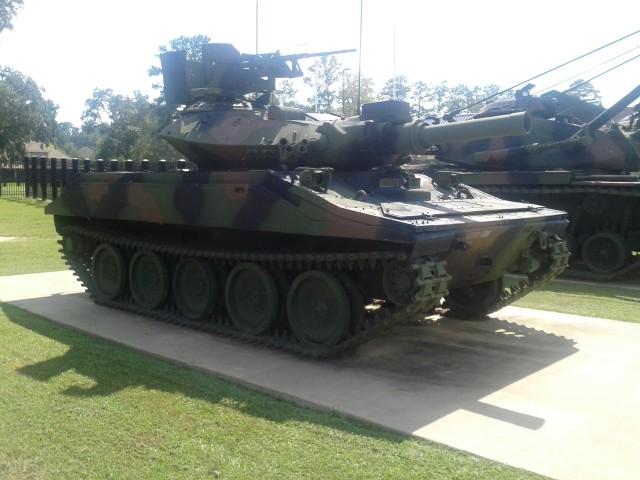
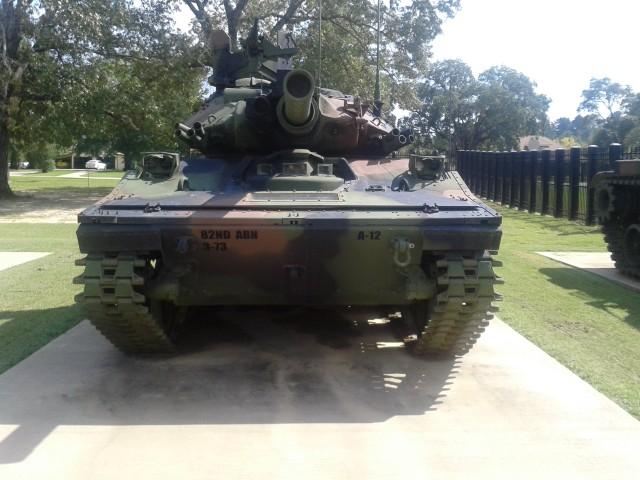 0
0 -
If you've spent any time in the US Army (or allied armies for that matter) since 1962, then you've probably spent time in a M113 APC - in one of its many variations. Heck, the damn things are still used!
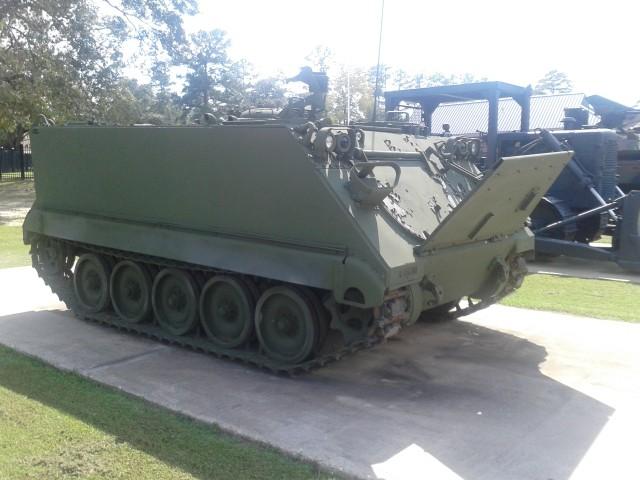 0
0 -
Moving on to '50s and the M56 90mm Anti-Tank Gun "Scorpion". This weapon saw service in Vietnam with the 173rd Airborne Brigade. Camp Beauregard is about 40 miles from Fort Polk, LA - home to the US Army Joint Readiness Training Center (JRTC), the premier training facility for light and airborne forces. I suspect that's why this weapon found it's way to the museum (along with a Sheridan tank you'll see later). A really neat vehicle in my opinion.
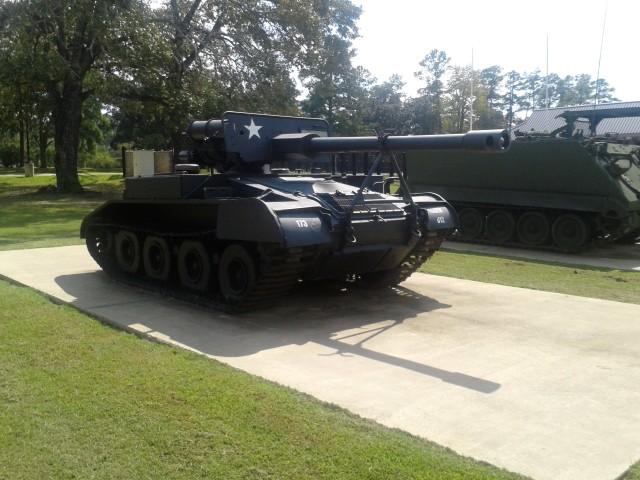
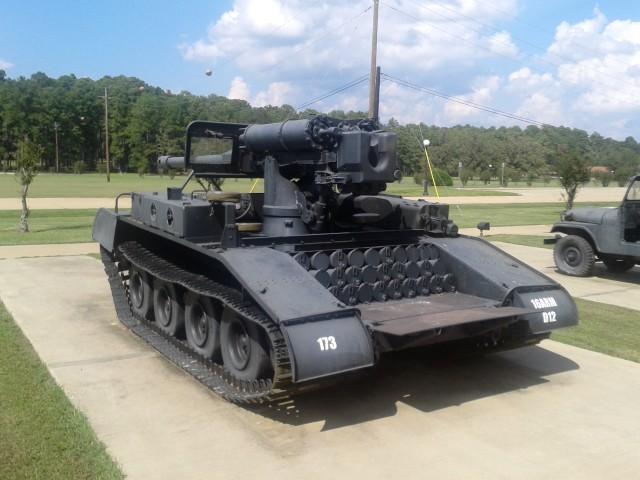 0
0 -
Late WW2 1944-45 Anti-Aircraft M19 40mm "Duster"

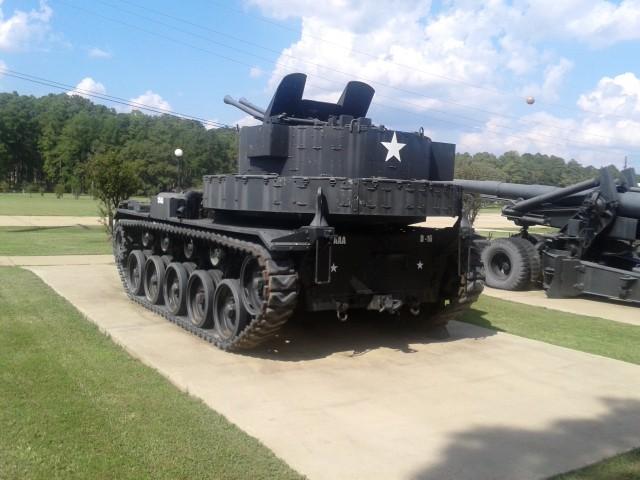 0
0 -
M2 155mm Long Tom Field Gun. This one has a carriage dated 1945. The Long Tom saw combat for the first time in North Africa on December 24, 1942, with "A" Battery of the 36th Field Artillery Battalion. Eventually it equipped around 49 battalions, including 40 in Europe and 7 in the Pacific.
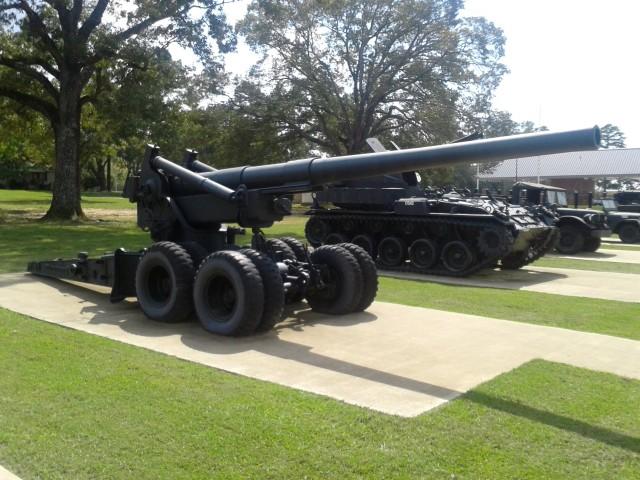
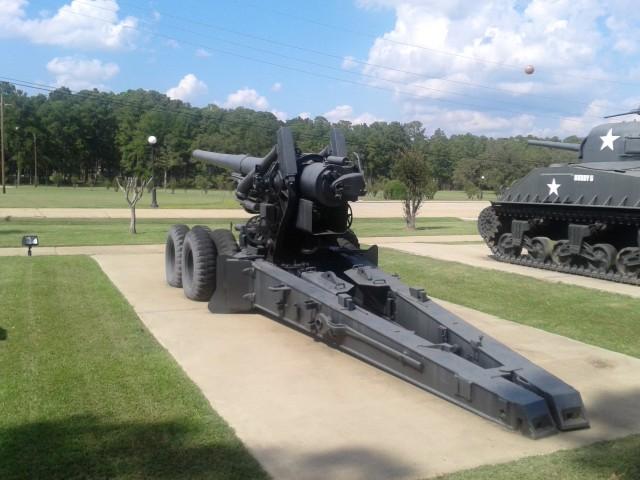 0
0 -
M4A3 Sherman Tank. HQ 6 of the 773 Tank Bn.
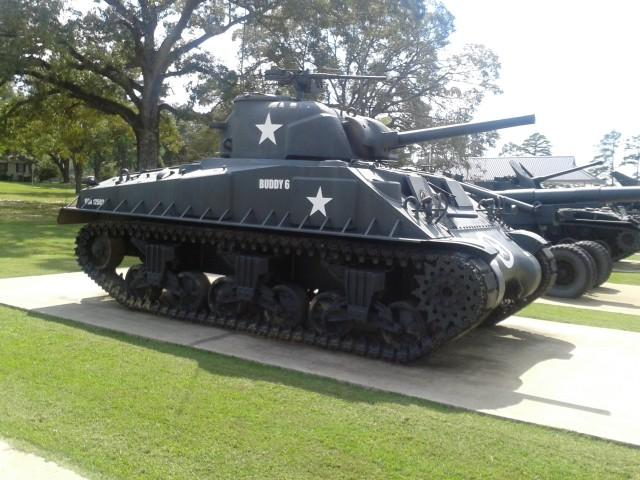
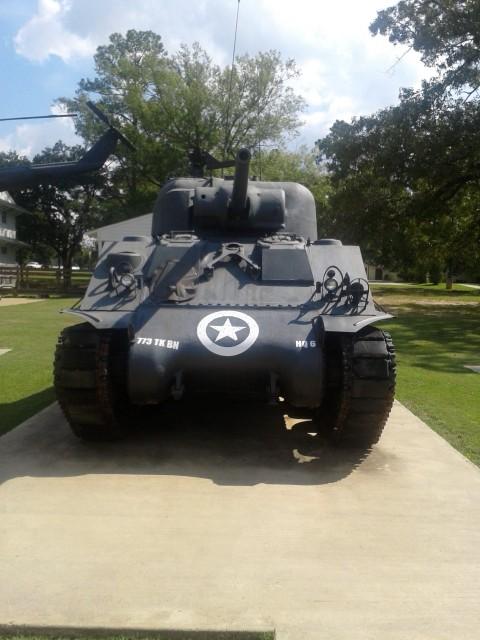 0
0 -
The static display of WW2 vehicles (and a Vietnam era UH-1 Huey helo - the museum also includes displays relating to the Louisiana National Guard).
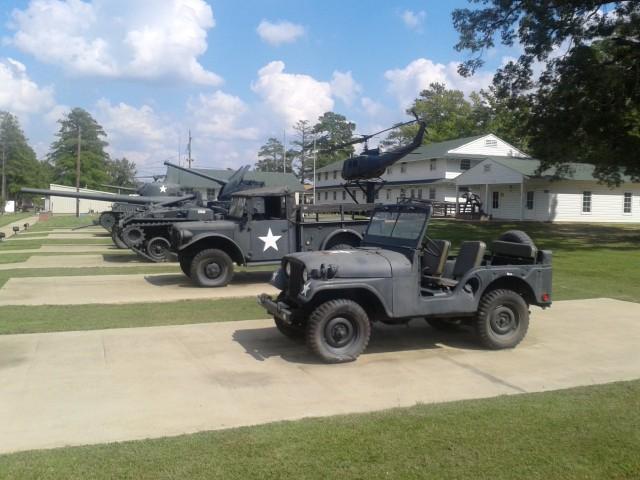 0
0 -
The field gun is a French 75mm Model 1897 - this one with a gun tube made in 1919 and later converted to the M2 gun carriage with split trail and rubber tires. It is kind of a Frankenstein gun since in the inter-war years the US did not produce new artillery pieces. In the background are the WW2 barracks housing the Louisiana Maneuvers.
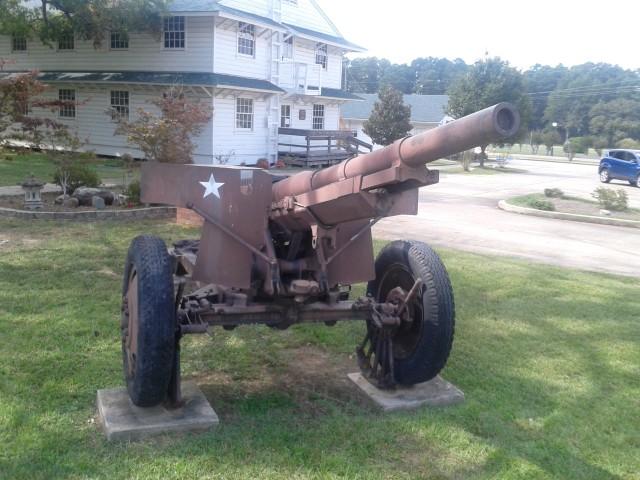 0
0 -
The Louisiana Maneuvers took place in the northern part of the State of Lousiana in August/Sept 1941 and are considered the major proving ground for US ground forces in anticipation of becoming involved in the war in Europe. The exercise involved half a million men, separated into 19 Army Divisions, and including several then colonels and lieutenant colonels - like Patton, Eisenhower and Bradley - who would later become the most famous US generals of WW2.
Last year, I spent several weeks at Camp Beauregard, a Louisiana National Guard camp - and the headquarters for the Louisiana Maneuvers - working for the US Army on a project. I had always known of the Maneuvers, but did not know there was a little museum dedicated to the exercise until I stopped to look at an old French 75mm field gun that was near the front gate of the camp. The gun sits in front of a couple WW2 barracks that have been converted into a museum covering the exercise. There is also a static display of armored vehicles near the museum (and some fighter jets that I didn't photograph).
To be honest, there isn't much reason to be in this part of Louisiana - but if you happen to be in the area and have some time to kill, it's a worthwhile stop.
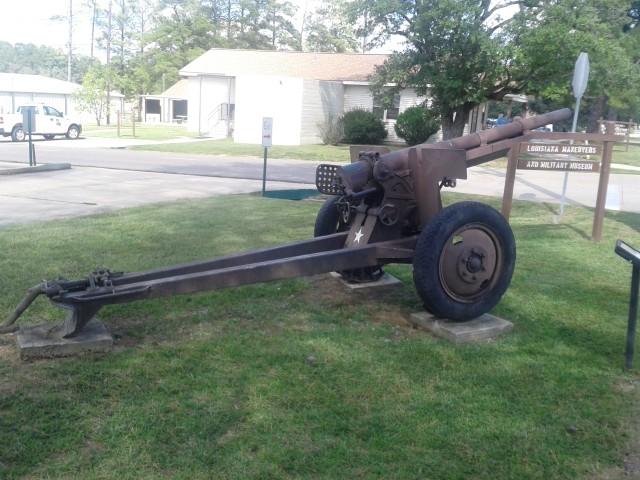 0
0 -
Y
This is already a post that generates dreams for me of future collecting conquests.
Regards
Brian
Yea, I know what you mean. I started "dreaming" when I learned that there is an artillery version of the Single Action Army.
 0
0 -
The Winchester 73 Rifle:

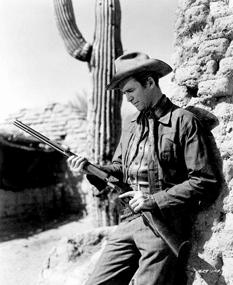 0
0 -
I'll stick to Brian's time-period for my first iconic submission... The Colt Single Action Army - the Colt .45 or the Peacemaker... The iconic firearm carried by the cavalry (including Custer's 7th Cav and Teddy Roosevelt's Rough Riders) and the gunfighters (like Wyatt Earp - I've read that Hickok actually carried Navy 1851s). There was a later model chambered in .44-40 Winchester - the Colt Six-Shooter - so a cowboy needed only one type ammunition for his revolver and his Winchester 73 rifle (another iconic weapon - The Gun that Won the West).
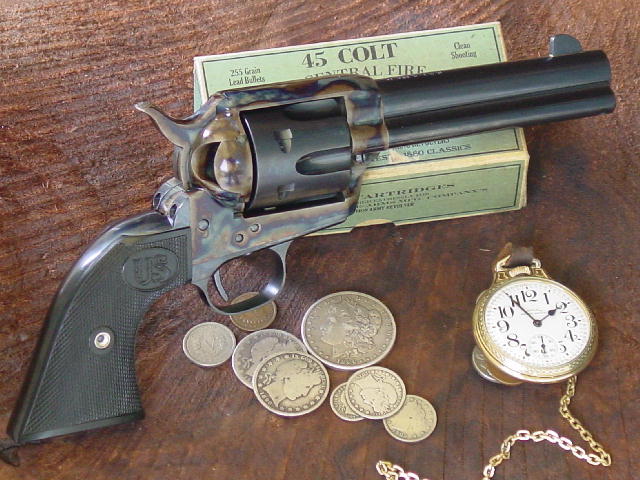

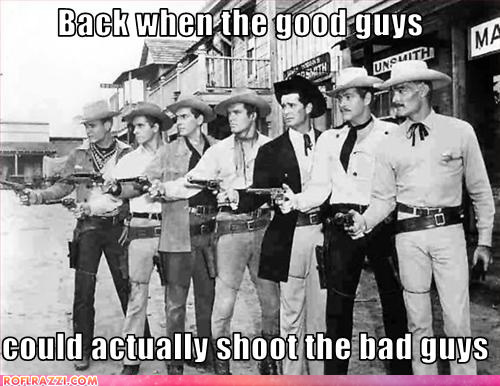 0
0 -
"Now for the question, keeping in mind that to me these are iconic of the old west saloon gambling table, what is the down card in the photo?"
Black aces and eights. The Dead Man's Hand. Actually, Wild Bill Hickok's hole card is supposedly unknown. Historical displays like to display it as a card from the suit of Diamonds - a five, nine or a jack - even a joker. Deadwood likes the Queen of Clubs. But it doesn't really matter - because Hickok was shot before playing out the hand.
0 -
So, it seems these discussions lean towards the idea that the circumstances surrounding the Balkan Wars may have been simply "local quarrels." Nonetheless, these events certainly would have an impact on the course of events over the next year. One event that many might forget was connected to the Balkan Wars was the rise of the Young Turks.
The multiple military defeats in the First Balkan weakened the Turkish Government and gave Enver Bey the chance to lead a coup in late January 1913. Enver Pasha established a military dictatorship and unilaterally established the alliance with Germany - which set the stage for Gallipoli and the Salonkia Front in WWI. And in the inter-war years, Enver Pasha's relationship with Reichswehr Chief-of-Staff Hans von Seeckt, led to a secret mission to the Soviet Union, which led to secret training arrangements for the German military to avoid the Versailles restrictions. (Coincidentally, the subject of one of my major Masters degree research projects.)
The Young Turks also were the origin of the Turkish military's long-standing image of itself as the protector of Turkey - leading to several modern coups. This has only been recently subdued as several Turkish generals have now been arrested for abuse of power.
So... While the Balkan Wars may have been local quarrels, they deserve study - and I think are the real starting point for the events that lead us to August 1914.
0 -
Nicely done. A quick wiki check shows this regiment has an interesting history. This part of the world is not my interest, but I've always "liked" the regimental names of the Indian Army.
0 -
Ammended.......always proof read

No worries! That's what we're here for....
 0
0 -
I can't tell you anything about the badge itself (maker, quality, genuine or not); however, the PW is the symbol of the Polish Armia Krajowa (or Home Army - sort of the Underground) in German-occupied Poland during WW2.
This is a good wiki explaining the meaning/background: http://en.wikipedia.org/wiki/Kotwica
Since the P.W. is not in the Kotwica (or Anchor) configuration of the letters - perhaps this is earlier and associated with the original Battle Group Wawer.
Eventually, the Kotwica became a patriotic symbol of defiance against occupiers and was painted as grafitti all over the city. This is still done in modern grafitti in Warsaw - both as rememberance and protest.
0 -
Appointed as Staff Lieutenant, 3rd Class, on 13 June 1917 At the time of his death he was a General Staff Officer (Agriculture) Wounded on 21 March 1918 and died of wounds on 30 March 1918. 5th Apr 1916 age 68.
He relinquished his rank in 1921 and died in Guernsey 7 September 1921
If you had to take anyone to war taking a wine importer would seem a good idea.........
A nice trio and background. I agree - wonder if he had Port sent in his Christmas packets.
Not to nit pick; however, don't these two bits quoted above seem contradictory: DOW March '18 and died Guernsey Sept 21?
0 -
Stupid question... Given the plethora of EKs... Are they always maker marked?
I am not an EK "expert" - my first ones were bought in the 80's and have been in a box for years. Recently, got a bar with an EK2 and had the inclination to look for a mark and didn't see one... (Yea, I know scan a photo...
 )0
)0 -
Looks more like sound detection/tracking equipment.
Very plausible thought... That's where I'd place my bet.
0 -
Caliber looks to be about 37mm.
Similar to photos at this link of rounds for the Austro-Hungarian 37mm Infanteriegeschütz M15. The guns are different though.
http://www.landships.freeservers.com/37mm_infanteriegeschutz_m15.htm
0 -
Les, thanks for your comment. That is a great run-down of how Britain was indeed "preparing for war."
As an old ground soldier, I'm certainly not a naval expert, but I've always wondered about the validity of the "naval arms race" as one of the base causes for the impending war. Germany had already decided in its War Council of Dec 1912, that it would take two more years before the German navy was ready for war; therefore - at least at this point in our history early 1913 - it was one of the reasons war did not break out over the Balkans. Certainly, the naval race caused tension between Britain and Germany, but I don't it guaranteed that war had to be inevitable. There is some evidence that as early as 1913, Germany had given up the idea that it could "compete" with Britain on the high seas and by mid-1914 Germany had shifted focus to building submarines in order to counter the effect the Royal Navy might have on Germany's ability to wage the "inevitable" land war.
0 -
The main reason that the Balkan wars did not escalate to global conflict was the fact that the Russians refused to back the Serbs carte blanche over Durazzo as a result the Serbs backed down.
Ahh, excellent point, Paul. I had only read that Russia mobilized a few military districts during the First Balkan War in response to Austrian mobilization, but have not read that the Russians refused to back the Serbs over Durrës. That certainly would be sufficient to cause the Serbs to back down over that issue. No basis to push back against Great Power pressure.
How was this communicated by Moscow to Belgrade in early 1913?
As for Sarajevo; you are getting ahead of the game.
 0
0




Louisiana Maneuvers and Military Museum, Camp Beauregard, Louisiana
in Museums & Shows
Posted
All I can do is refer you to Google
http://en.wikipedia.org/wiki/M56_Scorpion